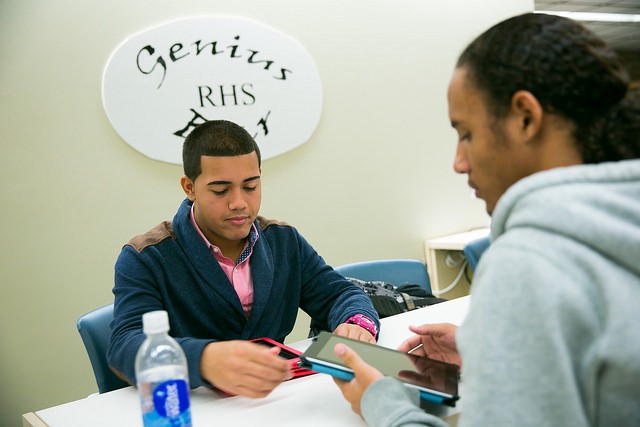At the Nellie Mae Education Foundation, we’re committed to creating more equitable and effective education systems — so that all New England students are ready for college and career. In our research, we’ve found that among New England high school students, roughly only half are ready for post-secondary education — meaning they can enter a post-secondary training or degree program without the need for remedial education.
At Nellie Mae, our work focuses on reaching this goal of college and career readiness for all students. We believe that reaching this goal means that our education system needs to be set up to ensure students are at the center — meaning that they have voice in their education, experience education that is personalized to their needs, are able to learn outside of the classroom, and can move along when they have mastered content — not when they’ve spent a certain amount of time sitting in classroom, or have reached a certain birth date.
Through our grantmaking, we’ve found that schools and districts who are shifting to student-centered systems often reach a bottleneck around education technology. Many of the ed tech tools that schools use — such as learning management systems and student information systems — are not built with student-centered instruction in mind. As an example, the most popular learning management systems use courses as an organizing structure, and are set up to track how well students do in each course. These tools present challenges in a mastery-based environment, where it is more important to track student progress toward mastery of competencies.
We’ve seen enterprising teachers find creative ways to overcome those challenges, such as building their own online grading systems to track mastery in Google Docs. But we think education technology should make teachers’ work easier, and not require additional work-arounds. An integrated technology system designed for student-centered learning should support teachers in the time-consuming and important work of student-centered learning — such as personalization, differentiation, and tracking progress on competencies.
Of course, it’s possible to have student-centered learning without a dedicated technology system. While technology may not be a requirement for student-centered learning, we think it has potential to pave the way. The right technology, selected and implemented thoughtfully, should make it easier for educators to ensure that every student can benefit from student-centered instruction.
That’s why the Nellie Mae Education Foundation is supporting the Rhode Island-based Highlander Institute to assess, design and pilot integrated learning systems to support student-centered teaching and learning. Over the next year, Highlander will be working with a number of partners, including seven Rhode Island school districts, to assess their ed tech needs and help them build a road map around tools to support student-centered implementation. They will look for tools that can help create the student experiences they envision, and find ways to ensure that those tools integrate seamlessly so that educators can use them effectively.
Our hope for this process is that Rhode Island schools and districts will be able to identify technology solutions that will enable student-centered learning to flourish in their classrooms. Teachers will have more time to spend one-on-one with students, instead of spending hours hunched over a Google spreadsheet. As part of this grant process, we’ll be documenting lessons learned and findings through a series of blog posts and podcasts. I hope you’ll follow along!
To learn more about the Fuse Architect project, updates, and partnerships, see all blogs in this series!
